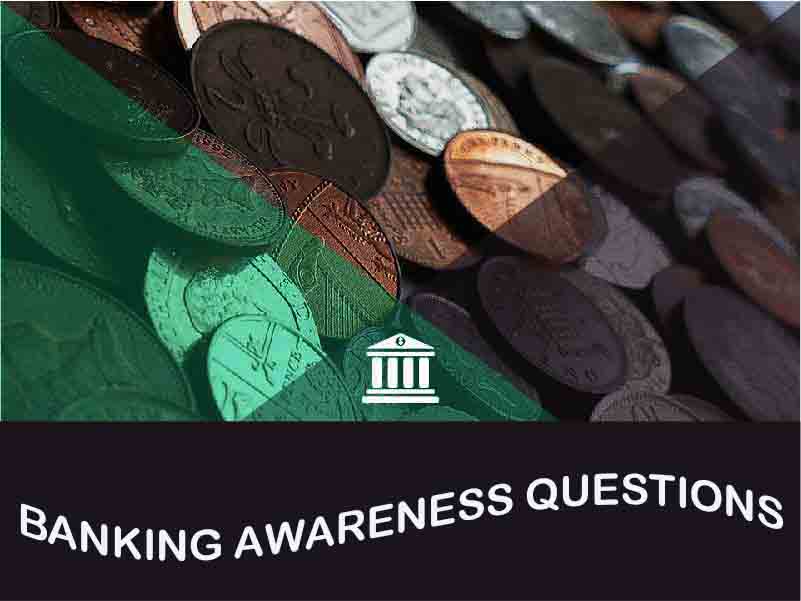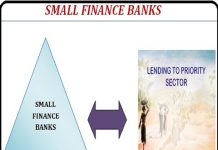While preparing for RBI Grade B Officer & other banking exams you should have some basic knowledge of important topics related to banking awareness. The knowledge will help you in understanding those banking topics in a clear & effective manner. So here we are coming up with the article on BANKS LOAN also called as BANKS LENDING, BANK FINANCE, BANK CREDIT and BANK ADVANCE.
Traditionally Banks give loans for various economic activities like – Agriculture, Industry, Trade, Export etc. Banks also give loans for personal purposes like Housing, Education, Consumption etc.
Banks earn profit by way of interest charged on loans. Banks earn non-interest income from borrowers like, commission, processing charges etc. The profit earned by banks is by way of difference in interest earned on loans and interest paid on deposits. This is called the spread for Banks.
Classification of Loans:
The lending of a bank can be categorized in different ways depending on the features:-
1. Sector Classification: – Priority Sector and Non Priority Sector Loans
(i) Priority Sector Loans: When loans are provided for developmental activities it is called priority sector loans.
Key points
- These are the sectors which the Govt. of India prioritizes as immediate need for the development of the society. (Eg.) Agriculture, Micro Small and Medium Enterprises (MSME), Education, Housing, small income generation activities called Micro Credit and various government sponsored schemes.
- Reserve Bank of India (RBI) from time to time fixes various targets under Priority Sector Segment for Banks, and the rules and regulations are stipulated by Government/RBI.
- (ii) Non Priority Sector Loans: Loans which do not form part of priority sector are classified as non priority loans. (Eg.) Consumption loans, Large industrial and trading activities, purchase of consumable durables, Loan against Government Securities or shares and purchase of vehicles for personal use etc.
2. Purpose Classification:- Term Loans and Working Capital Loans
(i) Term Loans: When a loan is sanctioned for the purpose of acquiring fixed assets like land & building, plant & machinery, furniture and fixtures etc. it is called a term loan.
(ii) Working Capital Loans: When a loan is given for meeting the day to day requirements of industry/trade like raw material, labor charges, electricity and transportation charges etc. such loans are called working capital loans. These are usually demand loans.
3. Period Classification:- Demand Loans and Term Loans
(i) Demand Loans: When a loan is payable on demand by the bank without installment facilities such loans are called demand loans.
Eg. Loan on Deposits (LOD), Crop loans, Cash Credit, Temporary Overdraft (TOD), Overdraft (OD), Bills/Cheque purchase and other short term loans. For such loans generally no installment payment is allowed and repayment is to be done within one year and in some cases in lump sum.
- (ii) Term Loans: Term loans are to be repaid over a period in installments. A medium Term Loan is to be repaid generally in 3-5 years and long term loans are paid in longer installments than this. There is freedom to repay in monthly, quarterly, half yearly or annual installments depending on the income generated out of the asset created.
When the repayment is fixed adding together installment and interest monthly such system is called Equated Monthly Installments (EMI). Generally Home Loans, Vehicle Loans, Consumer Loans and Salary Loans are repaid in this manner.
4. Security Classification:- Secured Loans and Unsecured Loans
(i) Secured Loans: When Banks insist on securities for any loan it is called secured loans for banks. This can be either primary security or collateral security.
Note: (i) The primary security is the asset created/purchased out of the loan. (Eg.) Car in case of a Car Loan, House Property in case of Housing Loan, Stock in case of a Trading Loan etc.
Note: (ii) Collateral security is additional security other than the assets created out of the loan. This is taken when the primary security is weak and the confidence level on the borrower is low, especially in larger advances, Examples are house property for a trade advance, Third party guarantee for a Educational Loan or additional Government Securities for a Vehicle Loan.
- (ii) Unsecured Loans: When Banks do not insist on securities for any loan it is called unsecured loans for banks. Ex. Credit Cards, Personal Loans, Some Home Improvement Loans, Student loans etc.
Different types of Fund Based Loan Facilities offered by Bank:
(i) Loan on Deposits: Customers of the bank invest their money in various deposit schemes. The customers have the right to pre-close the deposit before maturity in case of need for money and the banks charge a penalty on the same. The customer can opt for raising a loan on the deposit.
(ii) Loan on Gold Jewels: This forms a major loan portfolio for the Bank in rural and semi-urban areas. Customers raise loan against security of jewels for various purposes ranging from agriculture to consumption purpose. The ROI applicable is as per the purpose.
(iii) Temporary overdraft: In case of exigency and emergency, banks allow Temporary Over draft (TOD) on the current account of the customers. This is given for a very short period say one week and carries higher interest rate. This is given on select cases only. This facility is now allowed to Below Poverty Line (BPL) category of people under the financial inclusion plan also.
(iv) Over Draft: Banks allow overdraft facility against the security of bank deposits, shares, government securities, property, books debts etc. for meeting the working capital requirements of industry and trade.
The period of overdraft is for one year, which is to be renewed every year after review of the account and confirming satisfactory conduct of the same. Usually a margin ranging from 25% to 50% is stipulated depending upon the purpose and nature of security.
(v) Open Cash Credit: For meeting the working capital requirement needs, banks allow Open Cash Credit (OCC) against the security of stocks. Usually margin of 25-30% is insisted on the value of the stocks. Taking into consideration the value and currency of the stocks, drawing limit is sanctioned.
The borrower can operate the account within the sanctioned limit, with credit and debit operations, unlike in term loan where only one-time debit is allowed and the customer has to repay the same in installments. This is a most popular type of finance for trade and industry. While renewing the limit yearly, the financial statements are obtained from the borrower, and assessment is made on the financial statement strength.
(vi) Term Loan: Banks allow medium and long term loans for acquiring the fixed assets for trade and industry, various agricultural activities for agriculturalists, purchase of house property and consumable durables for salaried class, consumption purpose for salaried class and pensioners.
(vii) Bills or Cheques purchased/discounted: This facility is extended to borrowers as a post sales finance. Traders and manufacturers make sales in credit terms and very low cash terms. They allow normally a period of 15 days to 45 days to their clients for repaying the sales proceeds. Till such time their money is blocked in the business by way of book debts or trade debtors.
Banks help the borrowers by extending bills purchase or bills discounted and cheque purchase facility. When a demand bill is purchased it is called bills purchased and when a usance bill (having a fixed repayment tenor at a later date) is purchased it is called bills discounted. Banks earn interest and commission on such transactions and such loans are liquidated automatically on due date.
Different types of Non Fund Based Loan Facilities offered by Bank:
(i) Guarantee: Many of the Bank’s customers undertake performance or supply contract. The beneficiary of such facilities from Bank’s clients may not have full confidence on the customer and insist on a Bank Guarantee. The Bank is asked to give a guarantee that in case of default by the client, bank will pay the amount to the beneficiary. In such cases the bank’s funds are not involved currently but may fall back on the bank in future. These are termed contingent liability. Banks earn commission by extending such facilities.
(ii) Letter of Credit (LC): The supplier of goods to Bank’s clients may be allowing the same on credit terms. When the supplier does not have full confidence on the client, he may insist on opening a LC in his favor.
On such occasion, the bank gives an undertaking to the beneficiary that on the terms of the supply in case the client fails to pay, the bank will be making good the payment. All international trade transactions are executed on LC terms only. Banks earn commission on LCs opened on behalf of their clients.
























